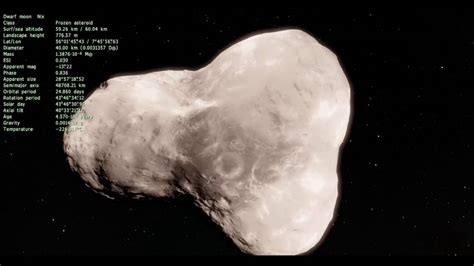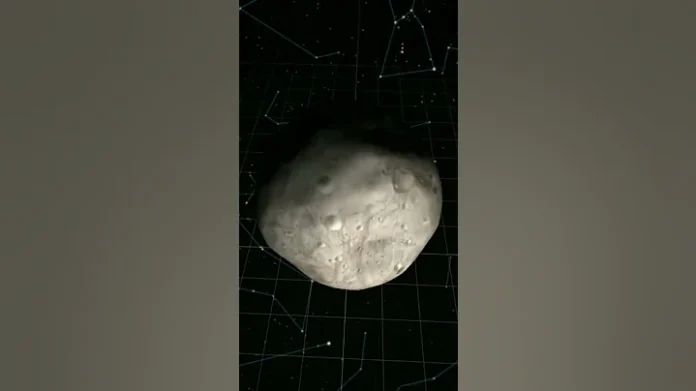Gravity, the fundamental force that governs the universe, has been a subject of fascination and study for centuries. From Newton’s groundbreaking laws to Einstein’s revolutionary theory of relativity, our understanding of gravity has shaped the field of astronomy in profound ways. This article delves into the mysteries of gravity, exploring its crucial role in the formation of stars and planets, the enigmatic nature of black holes, and the detection of gravitational waves. We will also examine how gravity influences galactic structures, the challenges posed by quantum gravity, and the ongoing research that promises to unravel even more secrets of the cosmos.
Investigate this topic thoroughly with uzocn.com
1. Historical Perspectives on Gravity: From Newton to Einstein
Our understanding of gravity traces its roots back to Sir Isaac Newton and his groundbreaking work in the 17th century, which laid the groundwork for classical mechanics. Newton’s law of universal gravitation, a revolutionary concept, posited that every mass exerts a force of attraction on every other mass. This force is directly proportional to the product of their masses and inversely proportional to the square of the distance between them. This deceptively simple formula not only explained the motion of planets but also the force that keeps objects tethered to Earth, profoundly transforming our comprehension of the physical world.
However, gravity’s story didn’t end with Newton. In the early 20th century, Albert Einstein revolutionized our understanding of gravity with his theory of general relativity. Einstein redefined gravity, not as a force, but as a curvature of space-time caused by the presence of mass. His famous equation, ”
𝐸
=
𝑚
𝑐
2
E=mc
2
Einstein’s theory of relativity linked energy and mass, further deepening our understanding of gravitational phenomena. It provided explanations for previously unexplainable phenomena, such as the precise orbit of Mercury and the bending of light around massive objects.
The shift from Newtonian mechanics to Einstein’s relativity was a defining moment in the scientific understanding of gravity. This transition not only opened up new frontiers for exploration but also laid the groundwork for the contemporary study of this most mysterious force in the universe.

2. The Role of Gravity in the Formation of Stars and Planets
Gravity, the architect of the cosmos, plays a fundamental role in the formation of stars and planets. In the vast expanse of space, clouds of gas and dust exist in a delicate equilibrium. However, when a region within a cloud becomes denser than its surroundings, gravity asserts its dominance, pulling the material inward. This collapse of matter leads to the birth of a star as the increasing pressure and temperature at the core ignite nuclear fusion.
Gravity plays a crucial role in a star’s evolution, dictating the orbits of planets that arise from the leftover material. In protoplanetary disks, gravity acts as the driving force behind the aggregation of particles, leading to the formation of planetesimals. These planetesimals, through collisions and mergers, eventually evolve into planets. This process, known as accretion, is guided by the gravitational pull of the newly forming star, ensuring that these nascent planets remain in their orbital paths.
Gravity is a fundamental force that governs the cosmos from a star’s birth to its demise. It orchestrates the dance of celestial bodies and shapes the evolution of planetary systems. Without gravity, stars and planets would never form, and the emergence of habitable worlds would be inconceivable.

3. Understanding Black Holes: The Ultimate Gravitational Phenomena
Black holes represent the most extreme manifestation of gravity in the universe. These enigmatic objects form when a massive star exhausts its nuclear fuel and undergoes a catastrophic collapse under its own gravity. The result is a singularity, a point in space where gravity is so intense that not even light can escape its grasp, creating what we perceive as a black hole.
The boundary surrounding a black hole, known as the event horizon, marks the point of no return. Once matter or radiation crosses this threshold, it is irreversibly drawn into the singularity. The immense gravitational pull of black holes distorts space-time, warping the fabric of the universe and producing phenomena such as time dilation and gravitational lensing.
Black holes challenge our understanding of physics, particularly at the intersection of general relativity and quantum mechanics. They are laboratories for studying gravity’s most extreme effects and offer insights into the limits of our current theories. As scientists continue to observe and analyze black holes, these mysterious entities may hold the key to unlocking deeper secrets of the cosmos.

4. Gravitational Waves: Detection and Implications
Gravitational waves are ripples in the fabric of spacetime, predicted by Einstein’s theory of general relativity, that travel through the universe at the speed of light. These waves are generated by some of the most powerful and energetic events in the cosmos, such as the collision of black holes or neutron stars. Although incredibly powerful, gravitational waves are incredibly faint, stretching and compressing space by minuscule amounts as they pass through it.
For decades, the existence of gravitational waves was purely theoretical. However, in 2015, scientists made a groundbreaking discovery when they detected these waves for the first time using the Laser Interferometer Gravitational-Wave Observatory (LIGO). This detection not only confirmed Einstein’s predictions but also opened an entirely new way of observing the universe. Unlike electromagnetic waves, which can be blocked or absorbed by matter, gravitational waves pass through everything, allowing us to study events that were previously invisible.
The implications of detecting gravitational waves are profound. They offer a new tool for probing the dynamics of extreme astrophysical events and provide insights into the behavior of gravity under extreme conditions. As technology advances, gravitational wave astronomy is expected to revolutionize our understanding of the universe’s most enigmatic phenomena.
5. Gravity’s Influence on Galactic Structures and Movements
Gravity is the driving force behind the structure and movement of galaxies, shaping the cosmos on the grandest scales. Within galaxies, gravity governs the motion of stars, gas, and dark matter, holding these vast systems together. It is gravity that causes stars to orbit the galactic center, where a supermassive black hole often resides, exerting a tremendous gravitational pull on the surrounding matter.
Galaxies themselves interact through gravity, leading to complex dynamics such as galactic collisions and mergers. These interactions can trigger bursts of star formation, alter the shapes of galaxies, and even lead to the formation of larger structures like galaxy clusters. Gravity also influences the large-scale structure of the universe, causing galaxies to form along vast cosmic filaments that stretch across space.
Moreover, gravity’s influence extends beyond visible matter, affecting dark matter, an elusive substance that makes up a significant portion of the universe’s mass. The gravitational effects of dark matter help to explain the observed rotation curves of galaxies, which cannot be accounted for by visible matter alone. Thus, gravity not only shapes individual galaxies but also plays a crucial role in the overall architecture of the universe.
6. Theories Beyond General Relativity: Quantum Gravity and String Theory
Einstein’s theory of general relativity has revolutionized our comprehension of gravity. However, it is not a complete explanation. The theory falters when applied to the quantum realm, specifically within black holes and at the Big Bang’s inception. This discrepancy has spurred scientists to investigate theories that unify general relativity and quantum mechanics, two fundamental pillars of contemporary physics that remain irreconcilable.
Quantum gravity is a field of study dedicated to understanding gravity through the lens of quantum mechanics. One proposed solution, loop quantum gravity, posits that spacetime possesses a discrete structure at its most fundamental level, composed of minute loops. This theory strives to bridge the gap between the continuous nature of general relativity and the discrete nature of quantum mechanics.
String theory presents an alternative framework for comprehending quantum gravity. It proposes that the universe’s fundamental constituents are not point-like particles, but rather minuscule, vibrating strings. These strings can manifest as diverse particles based on their specific vibrational patterns. Furthermore, they exist in a multitude of dimensions exceeding the familiar three spatial dimensions and one temporal dimension.
While these theories remain under development and await direct experimental verification, they hold great promise for advancing our comprehension of gravity. Their potential impact extends beyond a deeper understanding of this fundamental force, reaching towards a unified theory of everything that encompasses all the fundamental forces of nature.
7. The Impact of Gravity on Space-Time Continuum
Gravity has a profound impact on the space-time continuum, as described by Einstein’s theory of general relativity. Instead of viewing gravity as a force in the traditional sense, general relativity portrays it as the curvature of space-time caused by the presence of mass and energy. Massive objects like stars and planets warp the fabric of space-time around them, creating what we perceive as gravitational attraction.
This curvature affects the movement of objects and the passage of time. For instance, time runs slower in stronger gravitational fields compared to weaker ones, a phenomenon known as gravitational time dilation. This effect has been experimentally confirmed and is crucial for the accurate functioning of technologies like GPS.
The warping of space-time also leads to phenomena such as gravitational lensing, where light from distant objects is bent around massive bodies, allowing astronomers to observe celestial objects otherwise obscured. Thus, gravity’s influence on space-time not only shapes the behavior of objects in the universe but also our understanding of fundamental aspects of reality.
8. Future Research and Technological Advances in Gravitational Astronomy
Future research and technological advancements in gravitational astronomy promise to revolutionize our understanding of the universe. One key area of focus is enhancing the sensitivity and precision of gravitational wave detectors. While current observatories like LIGO and Virgo have made groundbreaking discoveries, future projects such as the space-based Laser Interferometer Space Antenna (LISA) are set to detect lower-frequency gravitational waves, offering new insights into phenomena like merging supermassive black holes and the early universe.
Advancements in computational techniques and data analysis are also crucial. With increasingly sophisticated algorithms and supercomputing power, researchers can simulate and analyze gravitational waveforms with greater accuracy, providing deeper insights into cosmic events and structures.
Additionally, the development of more advanced observational tools, including next-generation radio telescopes and gravitational wave observatories, will enable scientists to explore previously unreachable aspects of the universe. These tools will help map the distribution of dark matter, study the formation of galaxies, and test theories of quantum gravity.
As technology evolves, interdisciplinary approaches combining astronomy, particle physics, and computational sciences will enhance our ability to probe the fabric of space-time and unravel the mysteries of gravity. The future of gravitational astronomy holds the potential to answer fundamental questions about the nature of the universe and its underlying principles.
Exploring the mysteries of gravity reveals its pivotal role in shaping the universe, from the formation of stars and planets to the dynamics of galaxies and the enigmatic black holes. As we advance our understanding through gravitational waves and new theories, we inch closer to uncovering the deepest secrets of the cosmos, transforming our view of space and time.
uzocn.com


